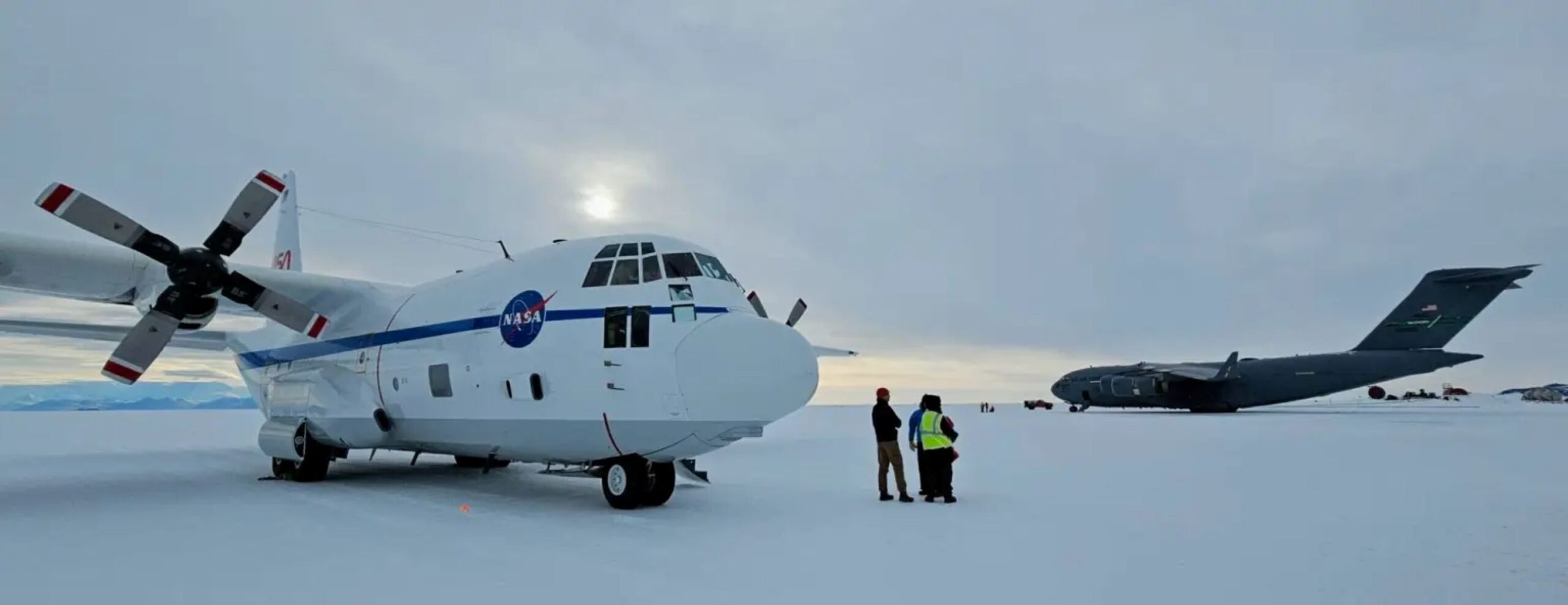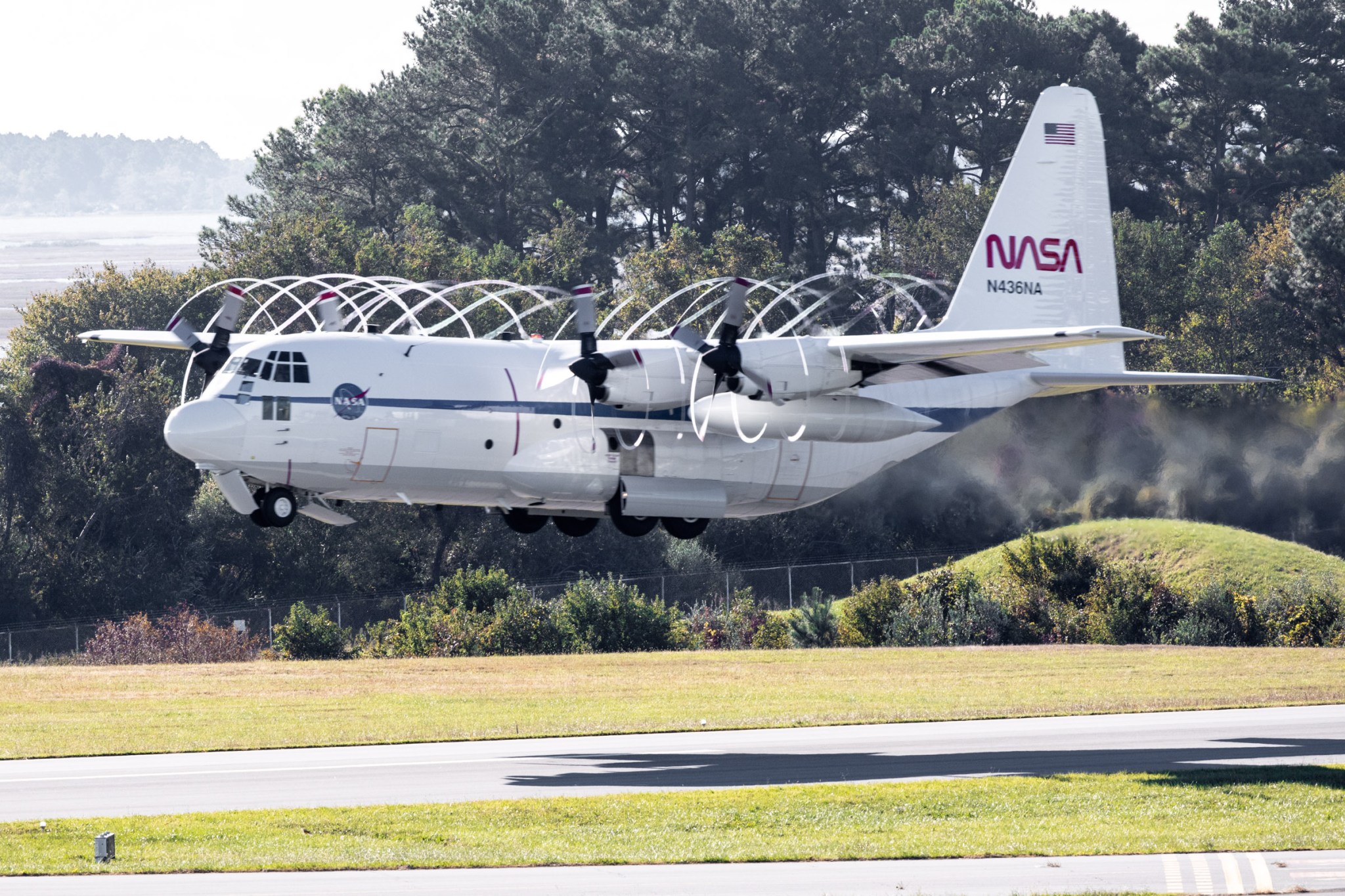NASA C-130 Makes First-Ever Flight to Antarctica for GUSTO Balloon Mission

On Oct. 28, 2023, NASA’s C-130 Hercules and crew safely touched down at McMurdo Station, Antarctica, after an around-the-globe journey to deliver the agency’s Galactic/Extragalactic ULDB Spectroscopic Terahertz Observatory (GUSTO). The United States research station, operated by the National Science Foundation, is host to NASA’s Antarctic long-duration balloon campaign in which the GUSTO mission will take a scientific balloon flight beginning December 2023.
The C-130 crew, which has now completed half of the 26,400-nautical-mile round-trip journey, first stopped at Fort Cavazos, Texas, on Oct. 17, to load the GUSTO observatory and members of its instrument team. Additional stops to service the aircraft and for crew rest included Travis Air Force Base (AFB), California; Hickman AFB, Hawaii; Pago Pago, American Samoa; and Christchurch, New Zealand, before finally reaching McMurdo, Antarctica – a mere 800 miles from the South Pole.

Aircraft Office teams prepare the C-130 aircraft for departure at NASA’s Wallops Flight Facility in Virginia. The aircraft will deliver the agency’s Galactic/Extragalactic ULDB Spectroscopic Terahertz Observatory (GUSTO) payload to McMurdo Station, Antarctica. The GUSTO mission will launch on a scientific balloon in December 2023.
NASA/Terry Zaperach
GUSTO, part of NASA’s Astrophysics Explorers Program, is set to fly aboard a football-stadium-sized, zero-pressure scientific balloon 55 days and beyond, on a mapping mission of a portion of the Milky Way Galaxy and nearby Large Magellanic Cloud. A telescope with carbon, oxygen, and nitrogen emission line detectors will measure the interstellar medium, the cosmic material found between stars, and trace the full lifecycle of that matter. GUSTO’s science observations will be performed in a balloon launch from Antarctica to allow for enough observation time aloft, access to astronomical objects, and solar power provided by the austral summer in the polar region.
NASA’s Wallops Flight Facility Aircraft Office in Wallops Island, Virginia, which manages the C-130, spent nearly a year in coordination efforts preparing for GUSTO’s trip to its launch site. From international clearances with agencies, cargo configurations with NASA’s Balloon Program Office, logistical support with the National Science Foundation at McMurdo, to specialized training on nontraditional navigation systems in Antarctica, the Aircraft Office developed an extensive plan to safely deliver the intricate science payload.
The first-ever mission to Antarctica for the NASA C-130 aircraft presented several long-haul cargo flight challenges. Mission managers and NASA’s Office of International and Interagency Relations (OIIR) started early to stay ahead of coordination of international flight clearances.
“We work very hard to make sure that we execute the mission at a high standard of technical competence and professionalism to maintain NASA’s international reputation,” said John Baycura, Wallops research pilot on the GUSTO mission.
Large time-zone changes challenge the crew’s circadian rhythm. Ninety hours in flight across multiple time zones requires an extra pilot and flight engineer on the mission to share the workload. Mandatory crew rest days at strategic locations, per NASA policy, ensure the crew receives enough time to rest, adjust to the schedule, and proceed safely.Visit NASA’s Goddard Space Flight Center Flickr for more photos.
Unexpected weather also tops the list of most pressing challenges for this type of flight. Oceanic crossings come with the added risk of weather complicated by no radar coverage over the ocean. The crew uses DOD and civilian weather agencies to identify hazardous weather and adjust flight routes, altitude, and timings accordingly. “For the specific case of McMurdo, while en route, we called the weather shop at McMurdo Station to get a forecast update before we reached our ‘safe return’ point. Using a conservative approach, we decided whether to continue to McMurdo Station or return to Christchurch and try again the next day,” said Baycura.
For this mission, no commercial entities supported the final leg to Antarctica. U.S. Air Force C-17’s and the New York Air National Guard LC-130’s that typically transport to McMurdo Station had limited space in their schedules. By using NASA’s C-130 for this specialized cargo mission, “the balloon program gained a dedicated asset with a highly experienced crew and support team. This greatly reduced the standard project risks to schedule, cargo, and cost,” said Baycura.
For more information, visit nasa.gov/wallops.





